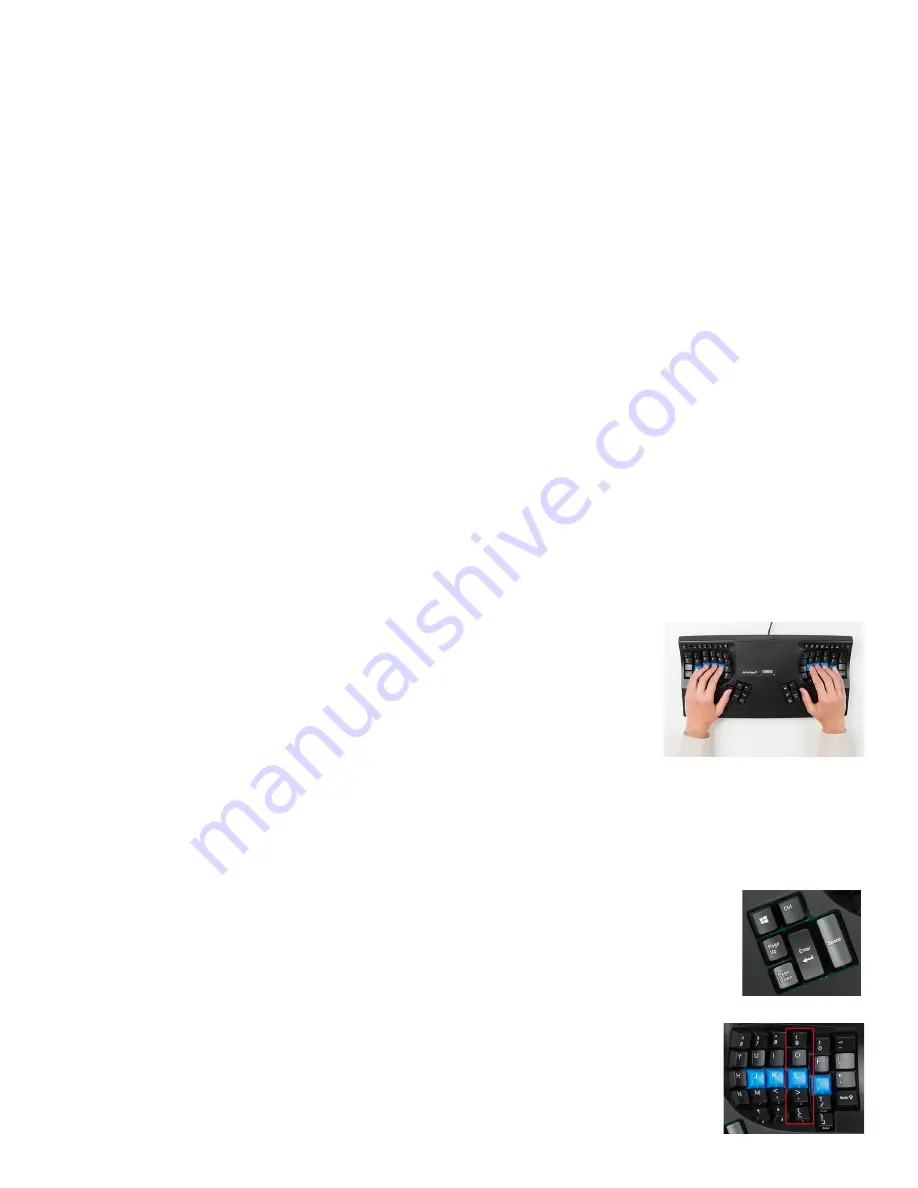
8
Power User Tools
Advanced users can elect to activate
Power User Mode
to open the v
-
drive on their computer. Layouts can
be viewed and edited directly, and other keyboard settings can be customized, all without the installation of
any software. Each Layout is saved to a separate
“.
txt
”
file (e.g. qwerty.txt) that can be opened and viewed
with any basic text
-
editor program, regardless of your operating system (e.g. notepad for Windows). Layouts
can even be shared with other users via email (see Section 1.5 for best practices) or saved to your computer
as a backup.
A
“
bootloader
”
functionality in built in to SmartSet, allowing you to update the firmware on your Advantage2 in
seconds using a downloaded update
(“*.
upd
”)
file and special key combination. So you can always be up
-
to
-
date with the latest releases from Kinesis and can ensure compatibility with the newest operating system
versions.
2.3 Ergonomic Design and Features
The design of the Advantage2 keyboard traces its roots to the very first Contoured
TM
keyboard introduced by
Kinesis in 1992. When Kinesis opened in 1991, the objective was to develop a design that would use
ergonomics to maximize comfort and productivity, and in the process would minimize the major health risk
-
factors associated with keyboarding. Every aspect of the form factor was thoroughly researched and tested.
Separate keywells for each hand
Separating alphanumeric keys into left and right keywells (Fig 2) reduces strain and stretching by
positioning the arms approximately at shoulder width, with the wrists straight.
This design reduces abduction and ulnar deviation which are harmful postures that can lead to repetitive
strain injuries such as carpal tunnel syndrome and tendonitis.
Integrated palm supports
Unlike most keyboards, the Advantage2 features integrated palm supports (Fig 2)
and self
-
adhesive cushioned palm pads which are user
-
replaceable. Together
these enhance comfort and reduce stressful extension and pressure on the wrist.
The palm supports provide a place to rest the hands while they are not actively
keying, though many users prefer to rest while typing to take weight off the neck
and shoulders. However, you should not expect to be able to reach all the keys
without rocking your hands forward at times.
Separate thumb clusters
The left and right thumb clusters (Fig 3) feature commonly used keys such as
Enter, Space, Backspace, and Delete. Modifier keys such as Control and Alt on the PC, and Command and
alt Option on Macs have also been relocated to the thumb clusters. Windows users will appreciate a Windows
key in the right thumb cluster. By moving these commonly used keys to the thumbs, the Advantage2
redistributes the workload from your relatively weaker and overused little fingers, to your
stronger thumbs.
Vertical (orthogonal) key layout
Keys are arranged in vertical columns (Fig 4) to reflect natural motions of your fingers, and
the keywells are sculpted and concave to fit the varying lengths of your fingers. This shortens
reaches and reduces the time to learn touch typing for new typists.
Concave keywells
The keywells are concave to reduce hand and finger extension. Hands rest in a natural,
relaxed position, with the fingers curled down to the keys. Keycap heights are varied to
match the different lengths of your fingers. A flat typing surface assumes that your fingers
are all of the same length, causing longer fingers to arch up over the keys.
“
Flat typing
”
Fig 3. Separate
thumb clusters
Fig 4. Vertical keys
Fig 2. Separate keywells &
integrated palm supports









































